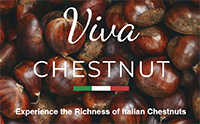Nuts, dates and dried fruit are beloved staples in the produce aisle, lending well to holiday baking and year-round convenience and nutrition.
From health-conscious consumers to home cooks, nuts, dates and dried fruit are an important part of festive recipes, gift baskets and convenience snacks, offering retailers opportunities to boost sales.
The Packer recently spoke to industry experts who shared insights into their industries, provided historic and emerging trends and offered suggestions for retailers to effectively promote these versatile staples to consumers.
Nuts
California is home to the nation's walnuts, providing ideal weather and soil for walnut trees to thrive, says Jennifer Olmstead, senior director of U.S. marketing and communications for the California Walnut Board and Commission.
“Walnuts are primarily grown by multigenerational farming families who take great pride in caring for land passed down for generations. Walnut farmers and processors are dedicated to providing safe, high-quality walnuts to consumers around the world," Olmstead said. “As an industry, we are focused on providing the best walnuts to the consumer, including safe handling of walnuts through the supply chain and continued demand-building initiatives that increase consumption and drive sales and velocity at retail. We are working to make walnuts more relevant to consumers as a nut for everyday eating occasions.
“Working with retail partners, we are bringing visibility and excitement to walnuts in produce with expanded offerings of package size options, flavors and more walnut products in different forms, which research shows are key motivators to consumers," Olmstead continued. "In foodservice, we are enhancing attention to walnuts in culinary development. We also have a chef-in-residence and are working with menu developers to expand walnuts on menus."
Jacob Basecke, executive vice president for Hammons Black Walnuts, says black walnuts hold a sense of nostalgia.
“One of the first things people notice about black walnuts is their bold, robust flavor,” Basecke said. “It's much more intense than regular [English] walnuts. There's a distinct earthy taste, which adds depth to both sweet and savory dishes. The flavor sets them apart immediately."
Instead of on commercial farms, black walnuts grow wild, mostly in the central and eastern U.S., he said.
"Each fall, thousands of individuals — mostly in the Midwest — head out to gather black walnuts from their yards, fields or nearby forests," Basecke said. "It's a very community-driven process that's both sustainable and local."
Since black walnuts grow naturally and are foraged, there's no need for irrigation, fertilizers or pesticides, making them one of the most sustainable nuts you can find, Basecke said.
Darryl Bollack, national sales manager for Mariani Nut Co., says there are two separate entities under the Mariani name: Mariani Nut, a walnut and almond division, and Mariani Packing, with dried fruits.
Mariani Nut, Bollack said, is a fifth-generation family-owned vertically integrated grower-processor out of California.
“We own about 15,000 acres of walnuts and almonds,” Bollack said. “Those two are our specialties, our forte, but we also have grower partners that supply pecans for us that we package — mostly grown outside of California and the Southwest.”
Mariani Nut sells natural walnuts as well as natural and seasoned almonds.
Emerging trends
Basecke said consumers are increasingly prioritizing sustainability, a trend that is extending to tree nuts.
"Nuts that are sustainably sourced and grown using regenerative farming practices are gaining popularity," he said. "Methods that enhance soil health, reduce water usage and minimize carbon footprints are becoming more important to consumers and businesses alike."
Black walnuts are seeing increased attention due to their sustainability and health benefits.
“Nuts are being marketed for specific health claims, such as heart health, brain function or weight management," Basecke said. "For example, black walnuts are gaining recognition for their high protein content and antioxidant properties. The growing emphasis on brain and heart health is likely to drive demand for tree nuts in this context."
He said there also is a growing trend toward snacking options with tree nuts.
"New formats such as flavored nuts, roasted and spiced varieties and nut-based bars and clusters are gaining traction," Basecke said. "Consumers are also showing interest in portion-controlled packaging and on-the-go options that combine nuts with other healthy ingredients like dried fruit, dark chocolate or seeds.”
Olmstead said that while walnuts may be seen as a traditional nut, they fit perfectly into modern lifestyles.
"They offer endless versatility in sweet or savory dishes across many global cuisines," Olmstead said. "Walnuts also provide valuable nutrition and health benefits that promote optimal wellness."
Here are some of the current trends where walnuts can play a role, according to Olmstead:
• Healthful Indulgence — Consumers are looking for “better-for-you” snacks with minimal ingredients that still taste great. Snacking is a top use for walnuts, and they offer a sought-after permissible indulgence while being nutritionally dense. They also pair well with dates and other dried fruits as a simple snack tray or do-it-yourself trail mix option.
• Wellness beyond physical health — Strong mental and emotional well-being and sleep are at a premium for consumers. Recent research suggests eating California walnuts regularly may support health and well-being by providing critical nutrients that foster whole-body benefits from weight management to mental health.
• Newstalgia — Consumers long for a new spin on familiar flavors, hence a proliferation of banana walnut products over the past year. Walnuts are a familiar ingredient that can be used in many modern recipe items.
• Putting the plant back in plant-based — Consumers are looking for plant-based meal options with simple, familiar ingredients. Walnuts shine as a plant-based taco filling or meatball.
• Interest in global cuisine continues to grow and walnuts are a core ingredient across many Asian, Mediterranean and Middle Eastern cuisines.
“With over 30 years of [California Walnut Commission]-supported health and nutrition research, efforts have shown walnuts can play a positive role in improving heart health, brain health and healthy aging at all stages," Olmstead said. "California walnuts are an easy way for consumers to add a boost of health benefits, flavor and crunch to their daily routines.”
“There's huge growth in walnuts,” Bollack said. “Every year — and I'm going on nine years — the numbers speak for themselves. It's double the growth every year because more consumers are discovering the usage and health benefits of walnuts.”
In-store marketing
Building appealing and centered displays at eye level can drive increased sales for walnuts, Olmstead said.
“Walnuts are generally merchandised in produce departments below the fresh fruit tables, as well as in the center store in the baking aisle. However, bringing walnuts to endcaps or stand-alone island displays allows for greater visibility and impulse purchases," Olmstead said. "Research shows that 76% of shoppers are more likely to purchase walnuts when they are displayed next to fresh fruits and vegetables in the produce aisle, [according to a Circana market basket survey,] so [by] positioning walnuts prominently next to fruits and vegetables, retailers can increase consumer awareness of the health benefits while driving incremental sales."
Basecke of Hammons Black Walnuts has these suggestions for retailers:
• One option is to create a holiday baking-themed section with all the necessary ingredients, including nuts, flour, sugar, spices and bakeware. Highlight popular holiday recipes like black walnut cookies, almond biscotti or spiced nut bread. Retailers can also incorporate complementary products, like pairing nuts with other fall or holiday products, such as dried fruits, baking supplies or even wine and cheese. This can encourage consumers to see nuts as a versatile ingredient for both savory and sweet dishes.
• Use ready-to-go shippers that are easy for retailers to set up and position in high-traffic areas. These should feature eye-catching graphics with messaging like "Perfect for Holiday Baking!" or "Nutritious Snacks for Fall." Position nut displays in prominent spots like store entrances, endcaps or near seasonal sections to maximize visibility. Feature promotional signage with attention-grabbing phrases like "Holiday Favorites" or "Healthy Fall Snacks."
• Use storytelling to create a connection between consumers and the nuts. For example, share the history of black walnuts, how they're foraged or their significance in traditional holiday recipes.
• Interactive displays are also effective. Use QR codes on signage that link to online recipe videos, tips on using tree nuts in meals or articles about the health benefits of various nuts. Retailers could also feature fun facts about different nuts to engage shoppers as they browse.

Dates
Bridgette Weber, sales and marketing manager for Bard Valley Natural Delights, said in mid-September that it's the middle of harvest, with Bard Valley being the ideal location to grow dates. Bard Valley is about a 150-square-mile radius that includes Arizona, California and Mexico, she said.
“It's the perfect microclimate because it has intense heat and low humidity, which is ideal for cultivating dates; dates need 100 days of 100-degree weather for optimal growing conditions," Weber said.
Emerging trends
“There's the traditional whole medjool dates,” Weber said. “Then we have pitted medjool dates where we take the pit out so they're easy to snack on and are more convenient. Then there are our value-added items, and our goal with them is to create unique options to introduce more people to the category.
“Dates have a household penetration of about 9.4% so we have an opportunity for growth and are testing new ways to introduce consumers to the category," she continued. "If perhaps a whole date is too intimidating, we have the Mini Medjools, which are a blend of medjool dates and simple ingredients. There are three flavors: coconut, which has only two ingredients; cacao pecan, which has a chocolatey flavor; and sweet and salty almond, which has a little tartness from the cranberries and then the crunch of almonds. Consumers are leaning towards healthier options, and these are nutritious and a little bit elevated from whole dates, making them a group of its own.”
Bard Valley Natural Delights' most recent release is its Medjool Date Strip with Tajín.
“We partnered with Tajín Chili Lime seasoning to create this option. Date strips are coated with Tajín seasoning," Weber said. "We're trying to appeal to the more adventurous eaters who are seeking new flavor experiences.”
People, especially millennials and Generation Z, are consuming more dates and other dried fruits and nuts due to the rise in charcuterie boards, picnics and healthy snacking at home, said Amanda Sains-Harris, vice president of marketing for Joolies Dates.
"At Joolies we've loved seeing creators make the viral Date Bark, which has especially gained attention on social media," Sains-Harris said. "This recipe combines a layer of flattened medjool dates as a base coated with a smooth layer of nut butter and melted dark chocolate, topped off with chopped nuts like walnuts or pistachios on top — it's like an undressed stuffed date.”
In-store marketing
“At Joolies, an appealing display starts with the brand and package," Sains-Harris said. "We share how versatile dates are on our package with suggestions on how to consume and have an eye-catching vibe that stands out on the produce floor and grabs shoppers' attention at any season. We also have QR codes on our packages and displays that invite consumers to our recipes to learn more 'Ways to Date.'"
Weber said Natural Delights has partnered with California Walnuts and is always looking to collaborate with not only retail partners but others in the industry.
“Partnerships are a big part of our strategy,” Weber said. “We have an in-house marketing team, so we have the flexibility to cater our marketing efforts to the specific retailer's needs.
“In terms of merchandising, there are two key periods — the holidays, so [the] Thanksgiving and Christmas time frame and then Ramadan and Easter," she continued." Sales peak during those times and continue to grow each year.”
Weber suggests merchandising dates during those periods to make sure grocers are running promotions.
“Albertsons, Vons, and Pavilions has been successful in selling Bard Valley dates, and it's all about merchandising," said Ryan Sanchez, produce sales manager for Albertsons. "We merchandise Bard Valley dates in a rack that sits on our banana tables. What goes better together than bananas and Bard Valley dates?”
Dried fruit
Leith Anderson, western regional sales manager for Mariani Packing Co., said the company offers a one-stop shop experience for its customers and consumers in a variety of options from consumer packaged to bulk formats.
“We pack and ship all the core, popular legacy fruits — such as prunes, cranberries, raisins, dates and apricots — and pack segments like tropicals (mango, pineapple, coconut, etc.), functional benefit items like probiotics, snack blends, organics as well as private-brand options for retailers," Anderson said. "This holistic approach allows flexibility for our customers to have products collectively ride together to distribution centers from a logistics/ordering perspective as well as a full category offering perspective on the shelf."
Emerging trends
Anderson said some of the emerging trends in dried fruit include:
- Continued elevated demand within the tropical segments — mango consumption continues to increase year over year.
- Functional claim benefits — digestive, immune, prebiotic and postbiotic, food-as-medicine marketing approach.
- Right sizing to both the trade channel and the consumer need state — large-size value packs, single-serve and multipack single-serve.
- Dates are seeing a lift in consumption for a few reasons — nutritional snacking, low glycemic, natural sweetener combined with tighter-than-average supplies and yield from storms and weather-related events in both major growing regions, the Southwest U.S. and the Middle East.
In-store marketing
“Dried fruit consumption follows a fairly predictable cyclical pattern with seasonality and holidays,” Anderson said.
Targeting the consumer need state using a quarterly planner helps drive the right display choices to narrow down, as available real estate is always a tight premium, said Anderson, adding that retailers should consider placement of displays adjacent to the fresh commodity counterparts within the fresh produce sections of the store, which also helps reinforce the idea.
















